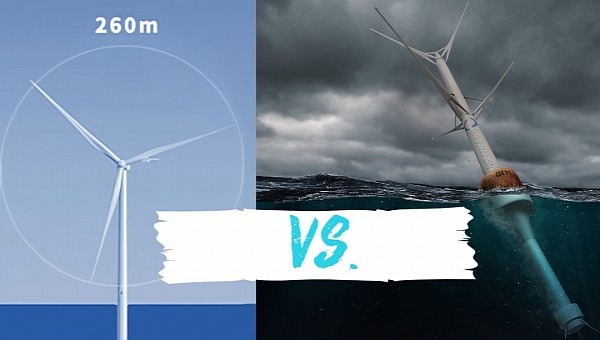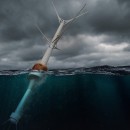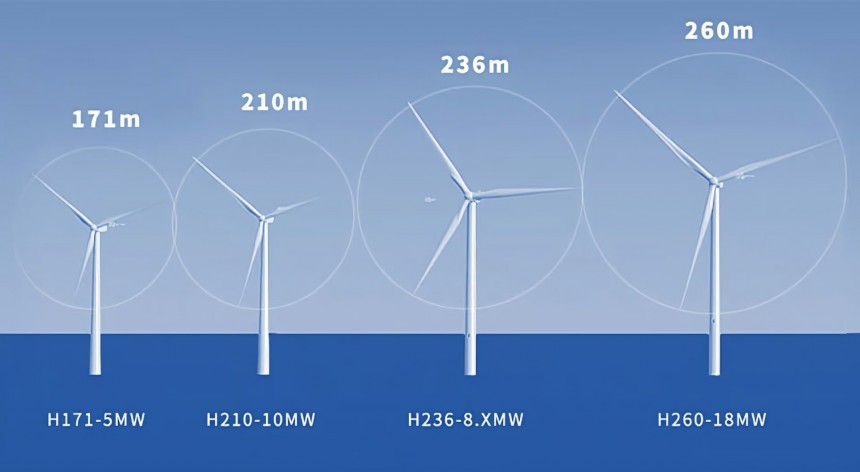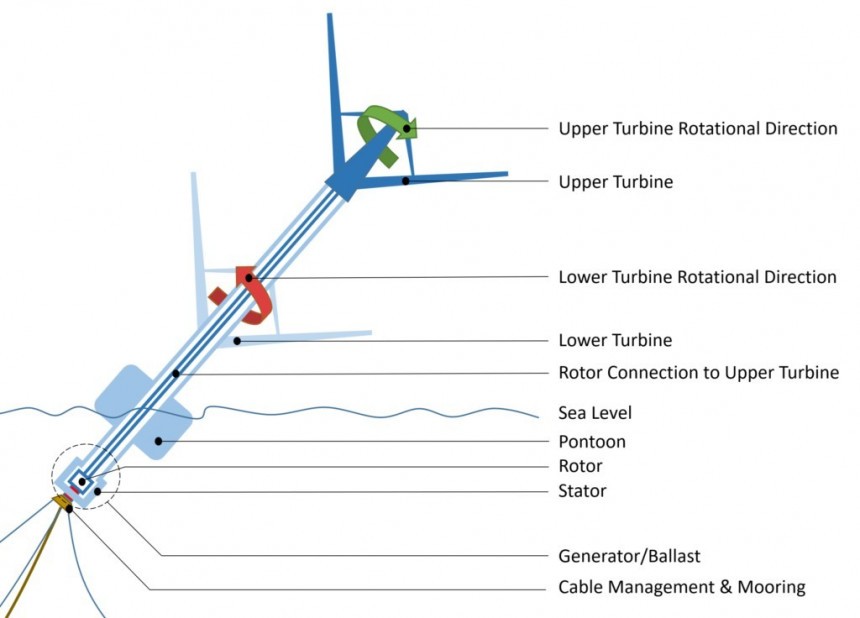You would expect an advocate of electromobility (aka “the dEVil’s advocate” – pun intended) to be open-minded. But I assure you I sometimes have a very hard time understanding and accepting some weird green inventions.
Back in the day, when I was in my 20s, I was just another petrolhead. I was amazed by beautiful cars, I was thrilled by powerful cars and I didn’t give a dime about global warming. But the engineer in me was in the background, questioning a lot about the engines and their pollutants.
When I first drove a Prius (the second generation), it seemed so weird and nerdy to me. Funny thing, almost 20 years later, I owned a used Prius II, but I ditched it in favor of an electric car. The point is my first contact with an unconventional hybrid car opened a little Pandora’s box in my mind.
I mean, I was still a petrolhead. But instead of ignoring alternative propulsion, I started to tolerate electrified cars. Besides, all the carmakers were luring everybody with those wild concept cars foreshadowing mass-production EVs somewhere in the distant future.
One day, I drew the short straw and had to test-drive the little/ugly/funny i-MiEV from Mitsubishi. At a red light, I was like “don’t look at me!” behind the wheel. When the traffic light went green, I reluctantly pushed the pedal to the metal, like I wanted to squeeze all the juice from the darn battery.
The photographer was in the nearby car, a 300-horsepower all-wheel-drive sporty Volvo. Its driver was able to catch up with me only at around 80 kph (50 mph). Of course, he wasn't trying to race me. But that was my “I saw the light!” moment. And from that point onward I began to question all that I knew about conventional cars, while avidly looking to gather as much information about EVs.
This led also to questions about pollution, global warming, climate change, clean energy, solar panels, wind turbines, and so on. Today I’m that annoying “greenwashed” EV fanboy, who’s spreading the word about fossil-fuel doom and is asking you to repent and embrace clean energy and electric cars.
At least, this is how some petrolheads might see me.
If you’re still reading this, you’re an enduring person! The point of this long introduction is that humanity is a slow-changing animal. We’re too afraid to give up our comfort zone and are willing to bury our heads in the sand when the big change is already happening.
Now, at the beginning of 2023, I try not to be that ostrich. And I try to understand the reason behind some of the most – I didn’t find an appropriate word – engineering ideas I have ever stumbled upon.
I still can’t imagine this. My brain simply cannot cope with the sheer size of this behemoth. And now, my poor brain needs to process something even bigger than that. Yes, a bigger wind turbine! It’s an 18 MW offshore wind turbine made in China.
This is not the kind of 'Manufactured in RPC' plastic toy you’re used to (or not). This is made by CSSC Haizhuang, owned by China State Shipbuilding Corporation. It’s the ”leader in the development of offshore wind power,” as its website states.
To be fair, the prototype is not complete yet. For now, only the rotor and nacelle of the giant – it’s their term, not mine – wind turbine are ready, and the blades will be ready in the following months. Now, about those blades: their swept area will be 5.3 hectares (almost 13 acres).
That’s one hectare (more than two acres) increase compared to Vesta’s 15 MW wind turbine (which, by the way, still holds its record until the Chinese rival will be assembled). Can you imagine seven football fields rotating in the air? I can’t. Maybe we’ll experience it in the Metaverse (wink-wink).
I expect the release of a 20 MW wind turbine in a few months, and so on. But the engineer in me is still in the denial phase. It can’t be real. It just can’t. Oh, sorry, brain, but this is going to hurt. Prepare for…
But wait, there’s another thingy called WWW out there. It’s a start-up – obviously – and it’s called World Wide Wind. Pretty smart and in line with their motto “Rethinking offshore floating wind.” I don’t know what you think, but their wind turbine is really something out of this world.
It's a vertical axis that floats on sea waves, but it’s actually composed of two shafts. One is connected to the upper turbine, and the other to the lower turbine. Each turbine is equipped with three-star shape so-called blades, which have opposite rotational directions.
Their cone-swept area efficiently captures the wind flow thanks to its original three-dimensional trajectory. Rotation movement is transmitted to the generator below sea level, which also acts as a stabilizer and counterweight.
Its design is so simple and efficient. It doesn’t need a nacelle, gear, cooling, or yaw, as a conventional wind turbine does. This is simply an unconventional VAWT – which stands for the vertical-axis wind turbine – that came with the novel idea of contra-rotating rotors. So, it’s now called CRVT (contra-rotating vertical turbine).
For now, it’s only a virtual proposition. The Norwegian start-up teamed up with Hydro, one of the largest aluminum companies in the world, and is planning a 3 MW prototype, operational by 2026. Start-up creators hope to scale it up to a 40 MW model by 2029.
The three-blade technology has its limitations. After all, conventional wind turbines were designed for staying fixed on the land. Putting them on the sea involves many difficulties, especially in floating applications.
That’s why World Wide Wind hopes their CRVT will slash floating wind’s levelized cost of energy from more than €100/MWh (which is more than $110/MWh) to €50/MWh (around $55/MWh) or less. It is possible because of a simpler design and the use of sustainable and recyclable materials – like aluminum.
And there’s more: these CRVT need less space between them (50% less than conventional wind turbines). Replacing all offshore wind farms with this kind of CRVT would increase four times the output, with no need to expand the sea area already in use.
Let’s put it this way: the rotor of the Chinese 18 MW turbine can generate almost 45 kWh of electricity per revolution, under full wind speed. It’s enough to charge almost two times my electric car’s under-30 kWh capacity battery, for instance.
Two revolutions are needed to charge the 100 kWh battery of a Tesla Model S. In one year, the theoretical 74 GWh production is enough to charge more than 20,000 electric cars. A 40 MW CRVT could charge 100,000 EVs per year.
These numbers are huge, I really need to use the calculator for other calculations. Because more than one billion electric vehicles will require a too vast amount of energy for my brain to process. And maybe this is why there are so many out there who don’t want things to change.
They can’t embrace the change because they don’t understand it. If you're one of them, watch out – there’s an asteroid coming. It could be the end of society as we know it, because of climate change. So, I bet you’d like the alternative, a fast-changing eco-technological environment. Our resistance is futile, either way.
When I first drove a Prius (the second generation), it seemed so weird and nerdy to me. Funny thing, almost 20 years later, I owned a used Prius II, but I ditched it in favor of an electric car. The point is my first contact with an unconventional hybrid car opened a little Pandora’s box in my mind.
I mean, I was still a petrolhead. But instead of ignoring alternative propulsion, I started to tolerate electrified cars. Besides, all the carmakers were luring everybody with those wild concept cars foreshadowing mass-production EVs somewhere in the distant future.
One day, I drew the short straw and had to test-drive the little/ugly/funny i-MiEV from Mitsubishi. At a red light, I was like “don’t look at me!” behind the wheel. When the traffic light went green, I reluctantly pushed the pedal to the metal, like I wanted to squeeze all the juice from the darn battery.
The photographer was in the nearby car, a 300-horsepower all-wheel-drive sporty Volvo. Its driver was able to catch up with me only at around 80 kph (50 mph). Of course, he wasn't trying to race me. But that was my “I saw the light!” moment. And from that point onward I began to question all that I knew about conventional cars, while avidly looking to gather as much information about EVs.
This led also to questions about pollution, global warming, climate change, clean energy, solar panels, wind turbines, and so on. Today I’m that annoying “greenwashed” EV fanboy, who’s spreading the word about fossil-fuel doom and is asking you to repent and embrace clean energy and electric cars.
At least, this is how some petrolheads might see me.
If you’re still reading this, you’re an enduring person! The point of this long introduction is that humanity is a slow-changing animal. We’re too afraid to give up our comfort zone and are willing to bury our heads in the sand when the big change is already happening.
Now, at the beginning of 2023, I try not to be that ostrich. And I try to understand the reason behind some of the most – I didn’t find an appropriate word – engineering ideas I have ever stumbled upon.
The 'Size does matter' race has a new champion
Just before New Year’s Eve, I was amazed by the biggest wind turbine in the world. It’s a 15 MW wind turbine that produces electricity to power 25.000 electric vehicles per year, while the blades’ sweeping area is more than five football fields combined.I still can’t imagine this. My brain simply cannot cope with the sheer size of this behemoth. And now, my poor brain needs to process something even bigger than that. Yes, a bigger wind turbine! It’s an 18 MW offshore wind turbine made in China.
To be fair, the prototype is not complete yet. For now, only the rotor and nacelle of the giant – it’s their term, not mine – wind turbine are ready, and the blades will be ready in the following months. Now, about those blades: their swept area will be 5.3 hectares (almost 13 acres).
That’s one hectare (more than two acres) increase compared to Vesta’s 15 MW wind turbine (which, by the way, still holds its record until the Chinese rival will be assembled). Can you imagine seven football fields rotating in the air? I can’t. Maybe we’ll experience it in the Metaverse (wink-wink).
I expect the release of a 20 MW wind turbine in a few months, and so on. But the engineer in me is still in the denial phase. It can’t be real. It just can’t. Oh, sorry, brain, but this is going to hurt. Prepare for…
… the wind turbine that is not a wind turbine
Flash-quiz: what does WWW stand for? Of course, you know it’s the acronym for 'World Wide Web.' I mean, you don’t really know what it is – if you’re not a programmer – but you know that for more than 30 years, almost everything in this world is based on it. Because the Internet is almost everything.But wait, there’s another thingy called WWW out there. It’s a start-up – obviously – and it’s called World Wide Wind. Pretty smart and in line with their motto “Rethinking offshore floating wind.” I don’t know what you think, but their wind turbine is really something out of this world.
Their cone-swept area efficiently captures the wind flow thanks to its original three-dimensional trajectory. Rotation movement is transmitted to the generator below sea level, which also acts as a stabilizer and counterweight.
Its design is so simple and efficient. It doesn’t need a nacelle, gear, cooling, or yaw, as a conventional wind turbine does. This is simply an unconventional VAWT – which stands for the vertical-axis wind turbine – that came with the novel idea of contra-rotating rotors. So, it’s now called CRVT (contra-rotating vertical turbine).
For now, it’s only a virtual proposition. The Norwegian start-up teamed up with Hydro, one of the largest aluminum companies in the world, and is planning a 3 MW prototype, operational by 2026. Start-up creators hope to scale it up to a 40 MW model by 2029.
The race for higher output is far from over
40 MW is two times more than the aforementioned gigantic Chinese 18 MW floating wind turbine. At this point, it simply seems like a nutty assertion to me. But you can’t beat the beautiful logic of technology.The three-blade technology has its limitations. After all, conventional wind turbines were designed for staying fixed on the land. Putting them on the sea involves many difficulties, especially in floating applications.
That’s why World Wide Wind hopes their CRVT will slash floating wind’s levelized cost of energy from more than €100/MWh (which is more than $110/MWh) to €50/MWh (around $55/MWh) or less. It is possible because of a simpler design and the use of sustainable and recyclable materials – like aluminum.
Let’s put it this way: the rotor of the Chinese 18 MW turbine can generate almost 45 kWh of electricity per revolution, under full wind speed. It’s enough to charge almost two times my electric car’s under-30 kWh capacity battery, for instance.
Two revolutions are needed to charge the 100 kWh battery of a Tesla Model S. In one year, the theoretical 74 GWh production is enough to charge more than 20,000 electric cars. A 40 MW CRVT could charge 100,000 EVs per year.
These numbers are huge, I really need to use the calculator for other calculations. Because more than one billion electric vehicles will require a too vast amount of energy for my brain to process. And maybe this is why there are so many out there who don’t want things to change.
They can’t embrace the change because they don’t understand it. If you're one of them, watch out – there’s an asteroid coming. It could be the end of society as we know it, because of climate change. So, I bet you’d like the alternative, a fast-changing eco-technological environment. Our resistance is futile, either way.









